 When I first saw this news story I thought it was one we reported earlier involving a similar aircraft and parachute. However, what grabbed my attention was the clarity of the still photo seen nearby.
It was, and it was not the earlier story. Let me explain…
The deployment event recently reported is not new even if that’s how the mainstream media portrayed it. Many months ago, a test flight got into an uncontrolled flight situation — a “normal” occurrence, that being what test flights are intended to discover. A successful parachute deployment followed. However, this provides an opportunity to learn more about airframe parachutes.
I know something of this because for 18 years, I worked closely with BRS Parachutes of South St. Paul, Minnesota. An airframe parachute system makes a compelling story that media reporters loved. At one time, BRS and its whole-airplane parachute systems were featured on seven (yes, 7!) different TV documentaries at about the same time.
When I first saw this news story I thought it was one we reported earlier involving a similar aircraft and parachute. However, what grabbed my attention was the clarity of the still photo seen nearby.
It was, and it was not the earlier story. Let me explain…
The deployment event recently reported is not new even if that’s how the mainstream media portrayed it. Many months ago, a test flight got into an uncontrolled flight situation — a “normal” occurrence, that being what test flights are intended to discover. A successful parachute deployment followed. However, this provides an opportunity to learn more about airframe parachutes.
I know something of this because for 18 years, I worked closely with BRS Parachutes of South St. Paul, Minnesota. An airframe parachute system makes a compelling story that media reporters loved. At one time, BRS and its whole-airplane parachute systems were featured on seven (yes, 7!) different TV documentaries at about the same time.Awesome New Year Gift: Saved by the Parachute (Thanks, BRS!)
 When I first saw this news story I thought it was one we reported earlier involving a similar aircraft and parachute. However, what grabbed my attention was the clarity of the still photo seen nearby.
When I first saw this news story I thought it was one we reported earlier involving a similar aircraft and parachute. However, what grabbed my attention was the clarity of the still photo seen nearby.
It was, and it was not the earlier story. Let me explain…
The deployment event recently reported is not new even if that’s how the mainstream media portrayed it. Many months ago, a test flight got into an uncontrolled flight situation — a “normal” occurrence, that being what test flights are intended to discover. A successful parachute deployment followed. However, this provides an opportunity to learn more about airframe parachutes.
I know something of this because for 18 years, I worked closely with BRS Parachutes of South St. Paul, Minnesota. An airframe parachute system makes a compelling story that media reporters loved. At one time, BRS and its whole-airplane parachute systems were featured on seven (yes, 7!) different TV documentaries at about the same time. Since I was the media specialist, I was busy with one TV crew after another. Print loved us, too. The World Wide Web was barely in development at this time.
While I loved helping to spread the word, what I always lacked was good photos or video. Almost no one is ready for such an event. Rarely were any photos available, other than an airplane on the ground with a parachute laid out nearby. When airborne view were captured, they were usually poor, blurry images. Video was even more precious. (For more info, see several BRS-related articles here.)

However, the photo capture is one of the best I’ve seen so it provides a teachable moment about parachute technology, specifically, the “slider” ring. This modest innovation is strikingly simple and effective. In short, it keeps the main life-saving canopy from rupturing if deployment happens at high speed. The slider only functions when airflow is high.
This is a good time to advise, “Please fly safely and work to avoid situations where a parachute is your only option. If you cannot, I hope you had the foresight to add a parachute.” I believe in them. I hope you do or will, too. We don’t want to lose any of you to preventable accidents.
The story as reported…

“The dizzying video shows the aircraft spinning faster and faster as the scenery speeds past. The pilot … was forced to deploy the safety measure during a spin recovery test.
“He escaped uninjured and the aircraft was fixed and ready to fly the following day.”
Daily Mail goes on to report [BRS] company founder Boris Popov as saying about the clip, “The pilot wants to remain anonymous as well as the location but we can say it was filmed in Asia and the plane was flying the next day.”
I know a little more but the actual airplane or incident is less the story than the success of the parachute product. These devices have saved many lives — BRS alone has logged nearly 400 “saves” and other companies like Magnum add to the number. I hope you will consider such a system for your aircraft. If you elect not to, then, please fly as safely as you can.
Happy New Year, everyone! I wish you many happy hours aloft in 2018 and I hope you never have to see your parachute.
 When I first saw this news story I thought it was one we reported earlier involving a similar aircraft and parachute. However, what grabbed my attention was the clarity of the still photo seen nearby.
It was, and it was not the earlier story. Let me explain…
The deployment event recently reported is not new even if that’s how the mainstream media portrayed it. Many months ago, a test flight got into an uncontrolled flight situation — a “normal” occurrence, that being what test flights are intended to discover. A successful parachute deployment followed. However, this provides an opportunity to learn more about airframe parachutes.
I know something of this because for 18 years, I worked closely with BRS Parachutes of South St. Paul, Minnesota. An airframe parachute system makes a compelling story that media reporters loved. At one time, BRS and its whole-airplane parachute systems were featured on seven (yes, 7!) different TV documentaries at about the same time.
When I first saw this news story I thought it was one we reported earlier involving a similar aircraft and parachute. However, what grabbed my attention was the clarity of the still photo seen nearby.
It was, and it was not the earlier story. Let me explain…
The deployment event recently reported is not new even if that’s how the mainstream media portrayed it. Many months ago, a test flight got into an uncontrolled flight situation — a “normal” occurrence, that being what test flights are intended to discover. A successful parachute deployment followed. However, this provides an opportunity to learn more about airframe parachutes.
I know something of this because for 18 years, I worked closely with BRS Parachutes of South St. Paul, Minnesota. An airframe parachute system makes a compelling story that media reporters loved. At one time, BRS and its whole-airplane parachute systems were featured on seven (yes, 7!) different TV documentaries at about the same time.



 My guess is most readers do not care particularly about recreational aviation or sport flying in China. After speaking to many pilots at airshows, I know Americans are somewhat aware of flying in other nations but we enjoy so much freedom to fly in the USA and we have so many choices of aircraft, airports, and flying gear that the rest of the world seems almost irrelevant.
My guess is most readers do not care particularly about recreational aviation or sport flying in China. After speaking to many pilots at airshows, I know Americans are somewhat aware of flying in other nations but we enjoy so much freedom to fly in the USA and we have so many choices of aircraft, airports, and flying gear that the rest of the world seems almost irrelevant.
 I have zero doubt China can build the airports. It is perfectly obvious this industrious country can build anything — literally anything — they want. I’ve never seen so many construction cranes and this is true nearly everywhere you look.
I have zero doubt China can build the airports. It is perfectly obvious this industrious country can build anything — literally anything — they want. I’ve never seen so many construction cranes and this is true nearly everywhere you look.

 They added, “It will also offer the possibility to carry up to four persons” for aircraft such as
They added, “It will also offer the possibility to carry up to four persons” for aircraft such as  You know this decades-old company for their popular
You know this decades-old company for their popular 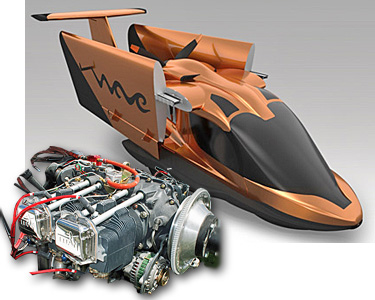
 The new quarters will include office and manufacturing spaces and Continental Motors plans to invest more than $70 million in the latest manufacturing equipment, a modern new building, advanced manufacturing processes, quality management systems, and customer support.
The new quarters will include office and manufacturing spaces and Continental Motors plans to invest more than $70 million in the latest manufacturing equipment, a modern new building, advanced manufacturing processes, quality management systems, and customer support.

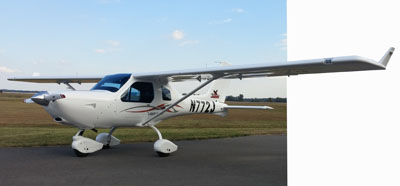 “[Selling new Jabiru aircraft] complements our brokerage, acquisition, and pre-owned sales business,” explained Scott. However, this does not mean US Sport Planes will stop working with other brands.
“[Selling new Jabiru aircraft] complements our brokerage, acquisition, and pre-owned sales business,” explained Scott. However, this does not mean US Sport Planes will stop working with other brands. Pete Krotje and Jabiru North America has been the Jabiru importer for North America for 18 years. His business will continue its current activity of engine and firewall forward sales as well as providing parts, service and technical support for all Jabiru products from its current location in Shelbyville, TN. For more information, Contact Pete Krotje at
Pete Krotje and Jabiru North America has been the Jabiru importer for North America for 18 years. His business will continue its current activity of engine and firewall forward sales as well as providing parts, service and technical support for all Jabiru products from its current location in Shelbyville, TN. For more information, Contact Pete Krotje at  The son of a career Air Force fighter pilot, Scott learned early about aviation as a lifestyle. He began building and flying hang gliders in 1973 and joined USHGA, United States Hang Gliding Association. In the early 1980s, he founded and operated Lone Star Airpark to provide facilities, services and flight instruction for ultralights, and eventually became a USUA, United States Ultralight Association AFI, Advanced Flight Instructor, AFI Examiner, and AFI Seminar Presenter. Scott also volunteered as a director and interim president of USUA, United States Ultralight Association.
The son of a career Air Force fighter pilot, Scott learned early about aviation as a lifestyle. He began building and flying hang gliders in 1973 and joined USHGA, United States Hang Gliding Association. In the early 1980s, he founded and operated Lone Star Airpark to provide facilities, services and flight instruction for ultralights, and eventually became a USUA, United States Ultralight Association AFI, Advanced Flight Instructor, AFI Examiner, and AFI Seminar Presenter. Scott also volunteered as a director and interim president of USUA, United States Ultralight Association. According to a
According to a 
 “Since our inception over 28 years ago, Garmin has been committed to providing superior products that are known for their innovation, reliability and intuitive design,” said Phil Straub, Garmin executive vice president, managing director of aviation. “This milestone is a testament to our long-established commitment to making significant investments in research and development, as well as the hard work and dedication of thousands of passionate Garmin team members that I have the pleasure of working with every day.”
“Since our inception over 28 years ago, Garmin has been committed to providing superior products that are known for their innovation, reliability and intuitive design,” said Phil Straub, Garmin executive vice president, managing director of aviation. “This milestone is a testament to our long-established commitment to making significant investments in research and development, as well as the hard work and dedication of thousands of passionate Garmin team members that I have the pleasure of working with every day.”




 Years ago, back in the early days of the Light-Sport Aircraft sector exploding into the world of aviation, of affordable aviation, one of the early entries was SeaMax, from a Brazilian-based company called
Years ago, back in the early days of the Light-Sport Aircraft sector exploding into the world of aviation, of affordable aviation, one of the early entries was SeaMax, from a Brazilian-based company called  SeaMax also has dashing looks. I likened it to a high-end speedboat …one that flies! Plus, it was comfortable to get in and to be in. All good.
SeaMax also has dashing looks. I likened it to a high-end speedboat …one that flies! Plus, it was comfortable to get in and to be in. All good.
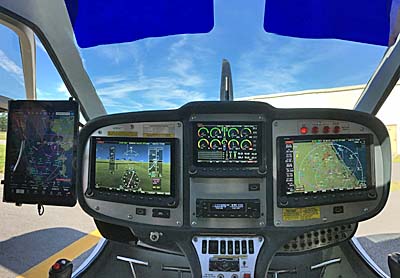
 I was one of those frustrated pilots, thanks to early experience with Lane A/B lights.
I was one of those frustrated pilots, thanks to early experience with Lane A/B lights. No more, thanks to Dynon and guys like John Hurst who works closely with the west coast avionics provider.
No more, thanks to Dynon and guys like John Hurst who works closely with the west coast avionics provider.





 1—LSA lead Aircraft deliveries around the globe. Does that sound hard to believe? You must look globally. While the American fleet is around 4,000 aircraft plus used LSA (nothing to sneer at, IMHO), in less than two decades more than 65,000 LSA or LSA-like aircraft have been delivered around the world. This is 3:1 compared to TC Aircraft — 2015 data show 969 Type Certified single engine piston aircraft delivered versus 3,000 LSA / LSA-like. For more detail, see our
1—LSA lead Aircraft deliveries around the globe. Does that sound hard to believe? You must look globally. While the American fleet is around 4,000 aircraft plus used LSA (nothing to sneer at, IMHO), in less than two decades more than 65,000 LSA or LSA-like aircraft have been delivered around the world. This is 3:1 compared to TC Aircraft — 2015 data show 969 Type Certified single engine piston aircraft delivered versus 3,000 LSA / LSA-like. For more detail, see our 
 5—Engineers have introduced new concepts in LSA powerplants. Engines lead by market leader
5—Engineers have introduced new concepts in LSA powerplants. Engines lead by market leader 
 All these initiatives are still a work-in-process, but LAMA and its partner the
All these initiatives are still a work-in-process, but LAMA and its partner the 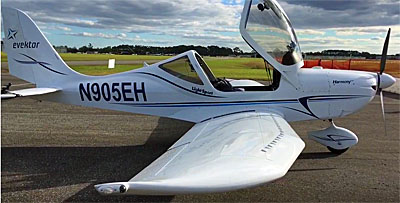 We spent the first day of the second year of this event zooming around
We spent the first day of the second year of this event zooming around  My video partner must be working around the clock as he prepared a blizzard of videos for release starting November 1st.
My video partner must be working around the clock as he prepared a blizzard of videos for release starting November 1st. According to a local newspaper, “More than 6,000 people are expected on the DeLand Municipal Airport Thursday, November 2 through Saturday, the 4th, to inspect more than 100 aircraft.”
According to a local newspaper, “More than 6,000 people are expected on the DeLand Municipal Airport Thursday, November 2 through Saturday, the 4th, to inspect more than 100 aircraft.”
 Nov. 1, 2017 10 a.m.
Nov. 1, 2017 10 a.m. 
 Nov. 1, 2017 8 p.m.
Nov. 1, 2017 8 p.m.  Nov. 1, 2017 11 p.m.
Nov. 1, 2017 11 p.m.  However, Kolb has always had a problem. They build taildraggers.
However, Kolb has always had a problem. They build taildraggers. FireStar II delivers “great climb performance with the Hirth 3202 engine but can be fitted with the Rotax 582 engine,” said Kolb’s Bryan Melborn. Hirth is the standard engine for the FireStar II SS mated to a 2.58:1 gear reduction drive swinging a 66-inch diameter fixed pitch propeller. This combination gives outrageous climb performance (as our video below demonstrates) with a top speed of 80 mph.
FireStar II delivers “great climb performance with the Hirth 3202 engine but can be fitted with the Rotax 582 engine,” said Kolb’s Bryan Melborn. Hirth is the standard engine for the FireStar II SS mated to a 2.58:1 gear reduction drive swinging a 66-inch diameter fixed pitch propeller. This combination gives outrageous climb performance (as our video below demonstrates) with a top speed of 80 mph.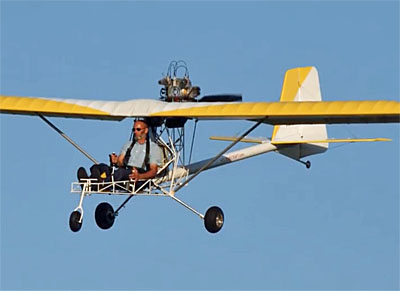 Previous customers who built the older tandem configuration are not left out. Bryan said, “We use stock FireStar wings and tail feathers, so if you own a FireStar II tandem seat, you can purchase a new cage and a boom tube from Kolb Aircraft and fit your wings, tail feathers, engine, and instruments to it and convert to side by side.
Previous customers who built the older tandem configuration are not left out. Bryan said, “We use stock FireStar wings and tail feathers, so if you own a FireStar II tandem seat, you can purchase a new cage and a boom tube from Kolb Aircraft and fit your wings, tail feathers, engine, and instruments to it and convert to side by side.  Every pilot I know… every aviation organization… every aviation government official… all acknowledge the same requirement for the future of aviation. We need more younger people entering this activity that we current pilots enjoy so much. I feel sure you agree.
Every pilot I know… every aviation organization… every aviation government official… all acknowledge the same requirement for the future of aviation. We need more younger people entering this activity that we current pilots enjoy so much. I feel sure you agree.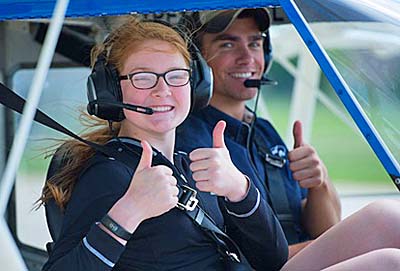 Let me repeat for emphasis. The second-largest group of pilots in an age range (20-35 years old) is almost as large as the one we think dominates (50-64 years old). Notice that each group contains pilots from a similar age range (15 years).
Let me repeat for emphasis. The second-largest group of pilots in an age range (20-35 years old) is almost as large as the one we think dominates (50-64 years old). Notice that each group contains pilots from a similar age range (15 years). One man is working to change the “youth problem” in his own unique way. You may already know him from his days directing the
One man is working to change the “youth problem” in his own unique way. You may already know him from his days directing the  “AviNation is published four times a year and is distributed to FBOs, universities and trade events throughout the country, connecting advertisers and contributors with industry professionals, enthusiasts and of course, those that will continue to push the industry forward.
“AviNation is published four times a year and is distributed to FBOs, universities and trade events throughout the country, connecting advertisers and contributors with industry professionals, enthusiasts and of course, those that will continue to push the industry forward. Like literally billions of other people, I’ve come to depend on YouTube videos, whether for pure entertainment or when I’m trying to fix something in my house or on my car. As you probably know, YouTube will almost certainly have not one video to help or delight you, but dozens …on the same topic. More than 300 hours of video are uploaded to Google’s computers every minute of the day, 24×7. Amazing! More than 5 billion videos are watched every day by more than 1.3 billion people (and that’s without China’s 1.3 billion people as the government does not allow YouTube in that nation).
Like literally billions of other people, I’ve come to depend on YouTube videos, whether for pure entertainment or when I’m trying to fix something in my house or on my car. As you probably know, YouTube will almost certainly have not one video to help or delight you, but dozens …on the same topic. More than 300 hours of video are uploaded to Google’s computers every minute of the day, 24×7. Amazing! More than 5 billion videos are watched every day by more than 1.3 billion people (and that’s without China’s 1.3 billion people as the government does not allow YouTube in that nation).


 Seamax LSA Seaplane
Seamax LSA Seaplane Flight Design USA
Flight Design USA Aeropilot L600 and New FX1
Aeropilot L600 and New FX1 Aeropilot USA
Aeropilot USA



